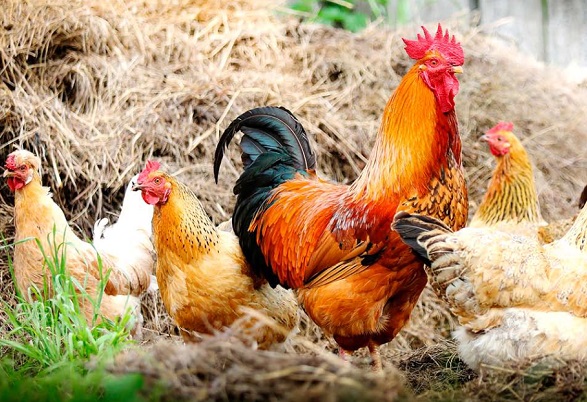Considering the agricultural emergency that a large part of the country is experiencing as a result of avian influenza, academics from the Faculty of Veterinary Sciences of the University of Concepción recently developed, on the Chillán campus, the fifth version of the Sustainable Backyard Poultry Seminar.
The conference was attended by more than a hundred poultry producers, mostly from peasant family farming, to learn about various issues related to the poultry industry in Chile, the role of the Agricultural and Livestock Service (SAG) in the control of avian influenza, the epidemiological chain of avian influenza, the diagnosis of avian influenza and biosecurity measures and also influenza and its challenges in Public Health: a look from the One Health perspective, among other topics.
Regarding the epidemiological chain of avian influenza, the academic, Dr. Paula Gädicke, who is related to the tools provided by epidemiology to better understand the behavior of avian influenza, was in charge.
“The concept of the epidemiological chain is to be clear about all the steps that the virus is taking, as the door of entry or exit, to or from each of the susceptible hosts and of the infectants to be transmitted from one species to another and that is a key element so that we know where to do the control. For example, it is possible that we can intervene and control production birds and backyard birds when they get sick, but for that we have to know how the virus leaves the birds that can become sick and how it enters our susceptible birds. Therefore, the better the chain of transmission of the virus is known, the better we can control the disease.”
Another topic that drew attention was the presentation of the UdeC Veterinary academic, Dr. René Ortega, who referred to whether “avian influenza will be the next pandemic?”, for which he provided background information and projections.
“I really meant if it could become a pandemic in humans, because if we take the point of view of birds, it is already a pandemic. A pandemic is a disease that is spread around the world and the disease is already in birds around the world. In the presentation I referred to what would have to happen or what things would have to change about the virus for a pandemic to occur in humans, especially considering that the virus is being transmitted more easily between mammals, although it is not yet transmitted well between mammals So, so far, let’s say there is no risk to humans,” said Dr. Ortega.
Another of the speakers was Dr. Javier Capponi, regional manager of Livestock Protection of the Livestock Agricultural Service (SAG) of Ñuble, who referred to the role of the entity in the control of avian influenza. “We have been focused on this since the end of last year to the present and we have gone through different phases, from the arrival of migratory birds to today with the arrival of domestic birds, mainly chickens, for which we are working through of a zoning where there are findings to be able to carry out surveillance and releasing areas depending on the surveillance periods”, explained the expert, who also reiterated the call to contact them and report the presence of birds that present symptoms. “The idea is that they contact us if they detect migratory birds, coastal birds, wild birds or affected domestic birds at number 2 2345 1100 or go to the nearest SAG offices.”
The attendees were also able to learn about the poultry industry in Chile through the presentation given by Dr. Makarena Rubilar, on the diagnosis of avian influenza and biosecurity measures presented by Dr. Sergio Donoso and on influenza and its challenges in Public Health, a look from the perspective of One Health, addressed by Dr. Alejandra Latorre.


